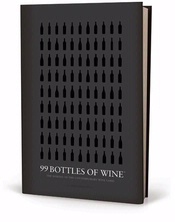As an expression of graphic design and art, wine labels have been with us since the latter part of the 18th century, claims British wine writer Robert Joseph in his illustrated book, “The Art of the Wine Label.” It would be another century or so before wine labels as mini-art pieces would become commonplace. Published in 1988, Joseph’s book help set the course of documenting wine label art in the modern era, followed in 2003 by “Icon: Art of the Wine Label,” a beautiful piece of printing art by label designers Jeffrey Caldeway and Chuck House, with photography by Robert M. Bruno.
wine label art in the modern era, followed in 2003 by “Icon: Art of the Wine Label,” a beautiful piece of printing art by label designers Jeffrey Caldeway and Chuck House, with photography by Robert M. Bruno.
Now, in what might be viewed as a nod to Caldeway and House, is the next serious presentation by a design company to show the advances and changes in wine label design. CF Napa Brand Design, under the direction of Owner and Creative Director, David Schuemann, has released a handsome hardback titled “99 Bottles of Wine, The Making of the Contemporary Wine Label,” with text by Schuemann and photography by Tucker & Hossler and Dan Mills.
The similarities between “Icon” and “99 Bottles” are striking: same black book jackets, both large format hardcover art books using sturdy paper stock, select labels and beautiful bottle and label photography. One clever bonus, that some readers may miss, is that the jacket on “99 Bottles” spreads out to reveal a full-color poster of all 99 bottles and their labels; once separated from the book, however, I found it difficult to return the poster to a dust jacket.
The format of the CF Napa Brand Design book is simple: Foreward, Introduction by Schuemann, and the 99 Bottles of Wine. With a few exceptions (Tapeña, Duckhorn, Fetzer), the layout consists of a mini-profile of the winery and an explanation about the label concept and design, with a full-page color photograph of the label on the opposing page.
Agustin Huneeus Sr., proprietor of Quintessa Wine, wrote the spirited, “Foreward: The Spirit of Wine,” relating the evolution of the wine label, from Picasso’s Cubist art on an early Chateau Mouton Rothschild label to the simple but effective bulls eye label for Slingshot Cabernet Sauvignon, “irreverently made in the Napa Valley.” Huneesus draws on his own extensive experience in the wine industry and his early days in Chile as director of Concha y Toro, and how a small competitor was challenging Concha y Toro’s use of a certain wine name. “I was pressed to invent a new name right on the spot,” recalls Huneeus. The result was Casillero del Diablo (Devil’s Locker) that was an immediate success but not without some backlash from the Roman Catholic Church for the use of the word Devil on a wine label. He concludes by expressing his belief that the one thing that prevents wine from being branded and sold like other consumer products is the spirit of wine. “Wine, at its heart, is a deeply personal endeavor.”
That personal endeavor, the connection between wine name or brand, label concept and the creative process is at the heart of CF Napa Brand’s ninety nine label designs in this book. A good way to begin your text and visual progression through 99 Bottles of Wine is to start at the back of the book, page 197, with the Index of the 99 bottles in the order of appearance, forming a personal itinerary for viewing the labels. Many of the winery names and labels are recognizable while others may be unknown (at least some are to me). The list starts with Old Ghost, a stark minimalist stamped label in white foil and overprinted with shades of grey, for an old vine Zinfandel from Lodi’s Klinker Brick Winery, and closes with the now iconic black and white label of Parallel Wines in Napa. The label’s intersecting parallel lines are ski tracks in the snow, reflecting the three couples who own Parallel Wines love for skiing in Park City, Utah.
Readers of 99 Bottles of Wine will discover their favorite labels, whether traditional ones such as Italy’s Santa Margherita labels (pages 68-69), the whimsical girl-on-a bicycle labels of Hahn Family Wines Cycles Gladiator wines (pages 128-129), or the quirky, puzzling design of Educated Guess, from Roots Run Deep Winery in St. Helena (pages 116-117).
My personal taste runs more to the traditional wine label: Capp Heritage, J Vineyards & Winery, Lucienne, Landy, Sea Smoke, and Duckhorn, to name a few. But I had to smile at many of the clever eye-catching designs such as Scarlett, Old Ghost, Slingshot, Brazin, Backhouse, John Anthony, Aiken, Educated Guess, Pazzo and Déjà vu. After all, drawing the attention of the consumer to a standout wine label amidst a forest of labels is what it’s all about.
If laid end to end, the number of expensive art books would probably reach around the world, a few times. By contrast, the number of quality art books dedicated to the design of wine labels is minimal at best. So, if you collect art books, are interested in wine label design, or are looking for a unique holiday gift, look no further than 99 Bottles of Wine.
99 Bottles of Wine, text by David Schuemann, CF Napa Brand Design, Val de Grace Books, Inc., hardcover, $49.50, ISBN 978-0-9848849-4-0.
Gerald Boyd, WRO Columnist Emeritus, contributes book reviews in this space on an occasional basis from his so-called “retirement.”
6
